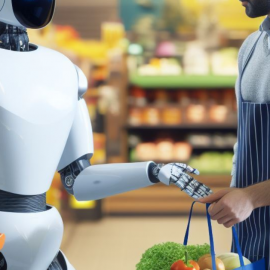

This article is an excerpt from the Shortform book guide to "The Selfish Gene" by Richard Dawkins. Shortform has the world's best summaries and analyses of books you should be reading.
Like this article? Sign up for a free trial here .
How does the competition for limited resources affect genetics? What factors can influence competition between animals?
The competition for limited resources creates natural conflict in the animal world. In The Selfish Gene, the competition is expected because the goal is to ensure your genes live on.
Read more about the competition for limited resources and how it relates to genetics, as described in The Selfish Gene.
Finite Resources on Earth
Because Earth is a finite world with finite resources, there’s a natural competition for the limited resources among the creatures who inhabit Earth. In this chapter we discuss various ways that family members compete with each other—their own selfish interests conflict with their shared desires to have their offspring and siblings survive. We’ll also explore the natural conflict between mates, each of whom would benefit from the other contributing more resources to their offspring.
Finally, we examine the role of sexual attractiveness, especially among species where the male doesn’t engage in this competition for limited resources between mates, but simply leaves to find another female to impregnate. Sexual attraction is especially important for such species, because there’s no chance that the mate will stick around to contribute to raising the offspring. In that case, all that matters is finding the best, most fit mates through which animals can pass on their genes.
The Universal Competition for Limited Resources
Every animal has a limited amount of resources to invest in furthering its genes. This limit represents the total amount of food that an animal can gather or make, as well as the total energy it can expend in caring for and protecting others. That natural limit raises the question of whether parents (and other relatives) can have favorites—not in the human sense of “liking” one child more than another, but just in the sense of distributing those resources unevenly among its children. So, there’s competition for limited resources even without direct, overt combat.
While it might seem like there’s no genetic reason to do so—all of an animal’s offspring have 50% of its genes—wise investments can maximize the number of surviving offspring. For instance, if forced to choose between the lives of an older child and a younger one, the animal should pick the elder. It will need less care (and therefore fewer resources) to reach maturity and pass on its genes. However, if forced to choose to feed one or the other—not in an immediate life-or-death situation—oftentimes animals will choose to feed their younger children because the older ones are more likely to fend for themselves. This is another example of implicit competition for limited resources.
Also, many animals will not care for the “runt” of a litter, because it is less likely to survive and reproduce than others. In extreme cases parents may even feed the runt to its siblings, or eat it themselves. Though it seems contradictory, a selfish gene may even cause runts to give up and die in favor of their stronger siblings, so as not to drain resources from individuals with better chances of survival.
There comes a time when it makes sense, from a selfish gene’s perspective, for the parent to stop having children and focus on raising more distant relatives. If a child would have less than a 50% chance of survival—such as if the animal is too old to effectively raise more offspring—then mathematically the animal should devote its efforts to raising a grandchild instead. The grandchild is more distantly related, but has a much better chance of surviving to reproduce. Of course the animals don’t consciously calculate these odds, these behaviors are programmed by genes that have survived and outcompeted their alleles. As a side note, this may be a genetic explanation for menopause in humans.
This logic also applies to siblings who have to compete with one another for food and care. If a sibling would receive more than double the benefit that the individual itself would—for instance, if the sibling is too young to find its own food and needs the parents’ care to survive—selfish gene theory dictates that the individual should want those resources to go to the sibling instead. The “double” cutoff is because the sibling has half the relation that the individual does to itself—50% instead of 100%.

———End of Preview———
Like what you just read? Read the rest of the world's best book summary and analysis of Richard Dawkins's "The Selfish Gene" at Shortform .
Here's what you'll find in our full The Selfish Gene summary :
- Why organisms don't matter, only genes do
- How all life forms begin with a replicating molecule
- How species need to balance aggression and pacifism to survive






